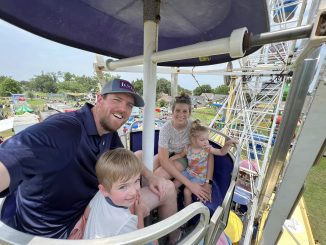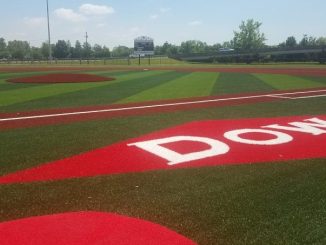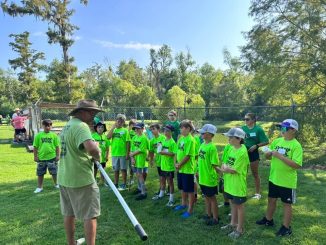
The Krewe of Lul parade isn’t just televised, it’s been filmed since the late 1990s documenting a rich, visual chronology of how the event has evolved and honored its royalty of Luling.
“It’s been a big plus,” Krewe spokeswoman Debbie Vial said of filming the parades. “It’s allowed us to archive the parade every year and keep that historical record, and it’s been a nice momento that could be presented to the kings and queens, and grand marshals.”
These are particularly poignant images considering the Krewe of Lul’s landmark.
“Through the years, you can see how the parade has grown and evolved, and even looking at the photos in preparation for the 40th anniversary – many of the children and grandkids of some of the past float riders and royalty are continuing the tradition,” Vial said. “They’re continuing the tradition of families and friends coming together in celebration of Mardi Gras along the streets of Luling. It’s a unique event and unique to see how it has transpired over the years.”
Until the 1990s, Cox Communications filmed and televised the parade.
For five of those years, Tab Troxler, the parish’s tax assessor, and Rochelle Touchard, external relations manager with Norco Manufacturing Complex, co-hosted the event.“To me, it was a treat … an honor to be able to do this with your local folks,” Troxler said of co-hosting the parade. “I enjoyed it.”
Troxler’s uncle and aunt, Lionel and Marcia Mae Troxler, also served as Lul’s king and queen one year and he accompanied them to the ball after the parade. He called it one of his fondest memories from the parade as being “related to royalty.”
Touchard also considered it a treat to commentate the parade along side her friend for nearly six years.
“We started out on a flatbed truck in front of the old Landry Lumber to ensure a prime view of when the king and queen would arrive to commence with the official toast and would reminisce about my memories of riding on the king and queen’s float when I was 11 years old as my grandparents, Earl and Julia Tastet, reigned in 1983,” she said.
Touchard added, “It was also exciting when the HHS Tiger Band would make the turn off of River Road onto Sugarhouse Road. Tab and I would reflect on our days marching with the band and the sense of pride we felt being able to be part of this great event and to think we were now commentating it. We eventually moved our location to the corner of Paul Maillard and River Road up top scaffolding to really show the true scale of the parade as it came over the railroad tracks and eventually made its turn onto River Road.”
She recounted how sitting that high gave them a true appreciation of the crowd the parade drew and still draws to this day.
“The parade and the festivities leading up to it truly symbolize the family culture that exists and is celebrated within our community and for a short time we were a part of capturing a piece of history,” Touchard added.
About five years ago, the St. Charles Parish Schools’ Satellite Center took over filming the parade, which continues to air today.
Al Dupont, the Satellite Center’s advanced TV broadcasting facilitator, said filming the parade gives his students real-time experience in shooting. Two to three students set up the production trailer and record the parade which airs on Cox Channel 8 (the school channel), on Channel 6 (the government channel) and YouTube.
“It’s a live thing happening right in front of you,” Dupont said. “You get one shot at it. It’s a live event and I think the more experience the better.”
Vial is committed to completing the parade’s visual timeline.
Anyone with photos or video footage of earlier parades is asked to provide them to be copied and archived. The footage would have been taken from the original parade in 1978 through today.




Be the first to comment